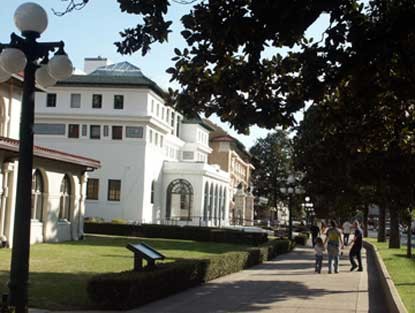Hot Springs National Park-Bathhouse Row
Introduction
Text-to-speech Audio
Images
Bathhouse row today

For more information, please click on the link for this book by Ray Hanley, Hot Springs: Past and Present

Backstory and Context
Text-to-speech Audio
Water from the Hot Springs Mountain are collected and distributed to each of the historic bathhouses-the leading tourist attraction in the state of Arkansas. An average of a million people per year visit this National Park and its associated bathhouses to witness the historic area and enjoy its legendary "healing" waters. Besides visiting the bathhouses and spas, the park also offers hiking trails, camping facilities, and etc. Hot Springs National Park was established on July 5, 1933. Although it is the smallest park in the National Park system, it remains one of the most popular. .
While the park is also one of the oldest in the National Park system, its history predates the establishment of the United States. For thousands of years, Native peoples came to this location to quarry novaculite--an important source of tools and weapons. Novaculite is Latin for “razor stone”. In 1804, President Thomas Jefferson sent the Dunbar-Hunter Expedition to explore the Louisiana Purchase. The first explorers to the area immediately recognized the unique value of the springs, which they believed held healing capabilities. By the turn of the century, Hot Springs was known as the “American Spa.”
The first bathhouses were constructed prior to this time. In 1830, Victorian style bathhouses were built at each spring. These wooden structures are not longer extant. The current bathhouses are a mixture of Spanish and neoclassical designs and were built during a period known as the Golden Age of Bathing (1911-1939).
